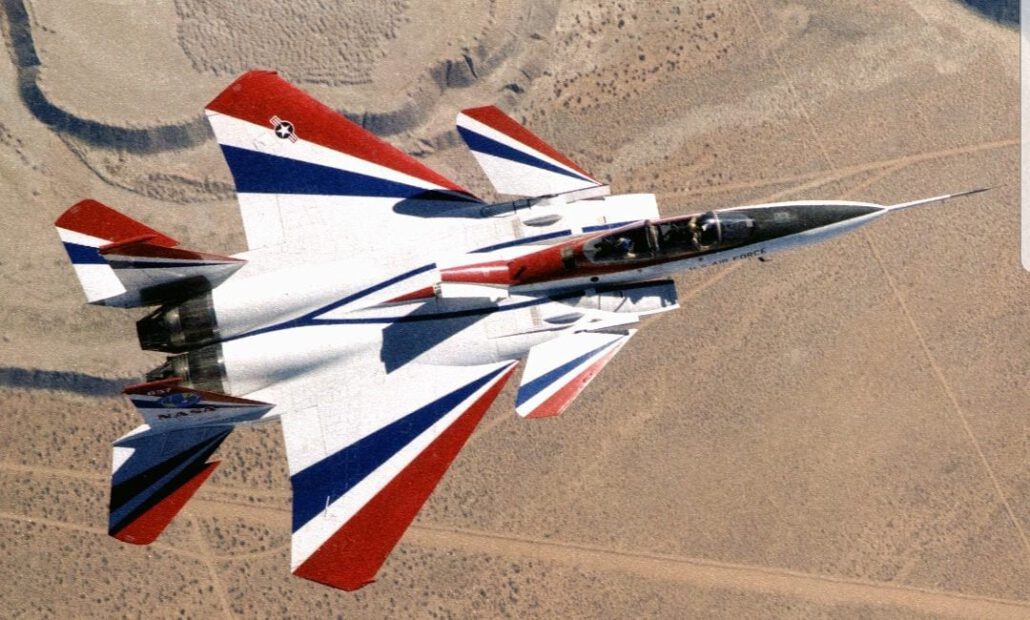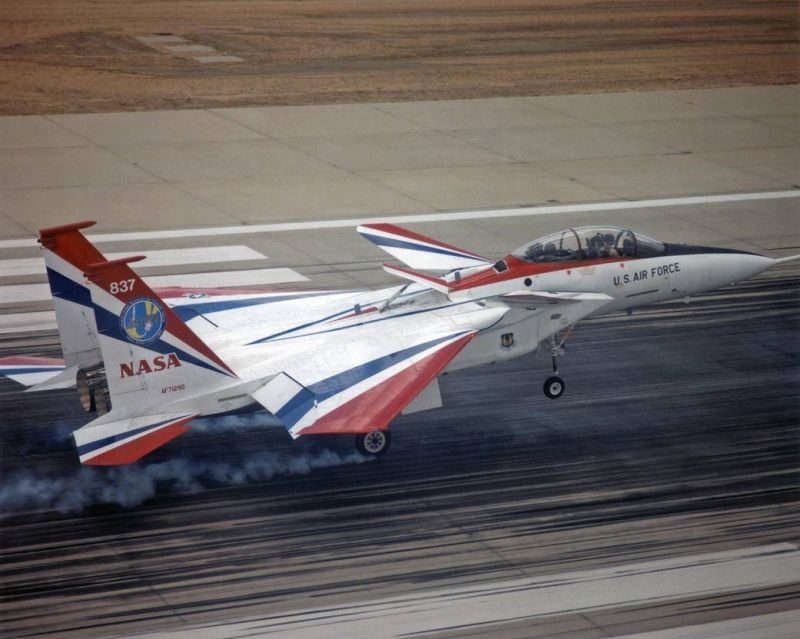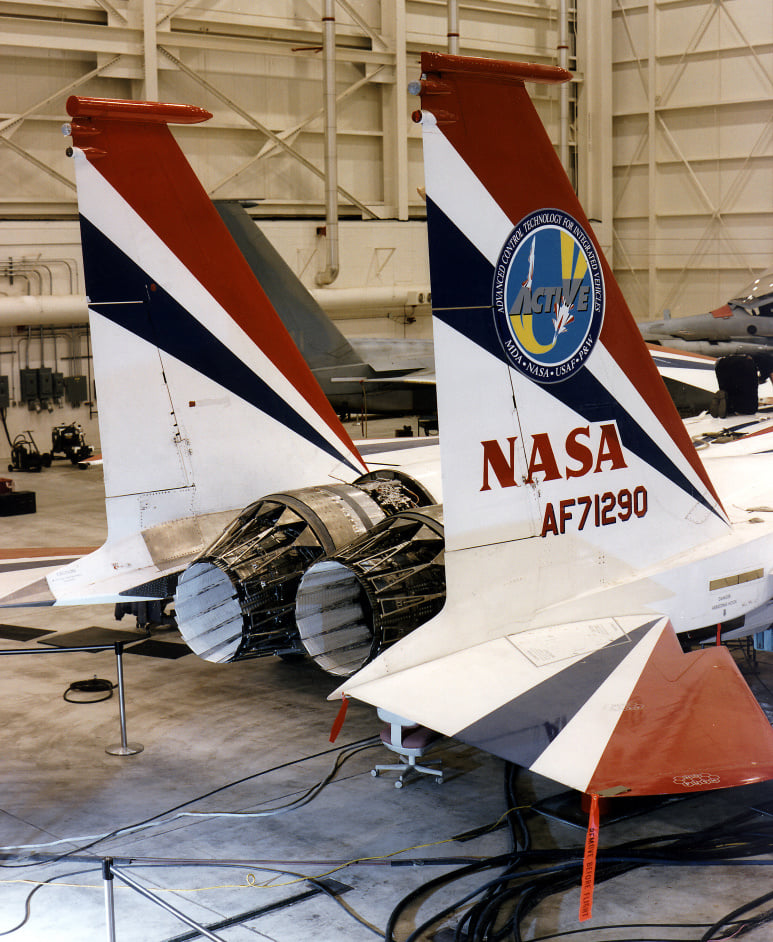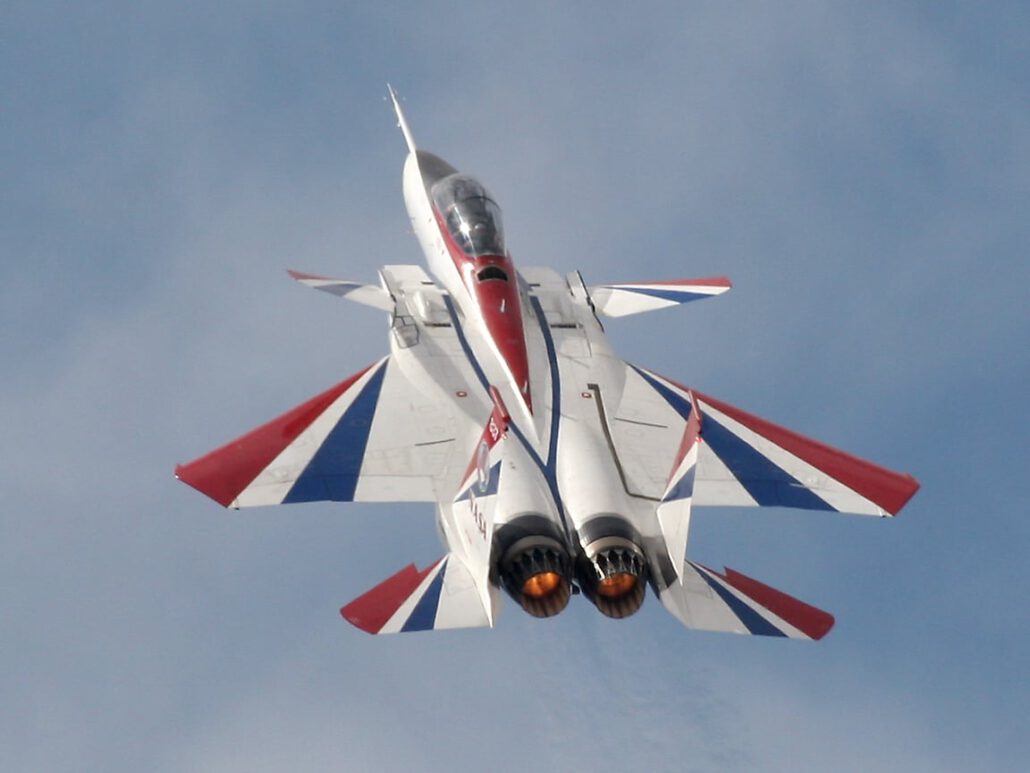F-15B-3-MC – 71-0290’s first flight was made on 7 July 1973, and it was the first of two TF-15A two-seater prototypes; the TF-15A designation was changed to F-15B on 1 December 1977.
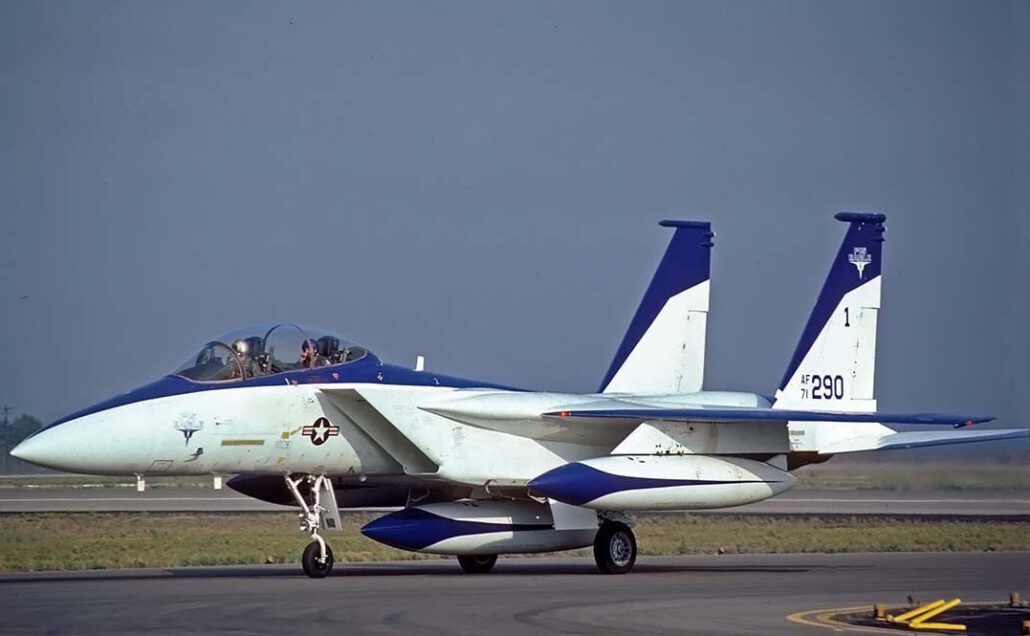
The aircraft actually followed 71-0286 in the production order, and was used by the combined McDD/USAF F-15 Joint Test Force at Edwards AFB between July 1973 and June 1983. Interestingly, the aircraft conducted flight tests without a canopy in order to evaluate the effects of windblasts on the crew in May 1977. At first, a dummy was placed in the backseat, but this was later replaced by a human volunteer! I haven’t got any photos from this…
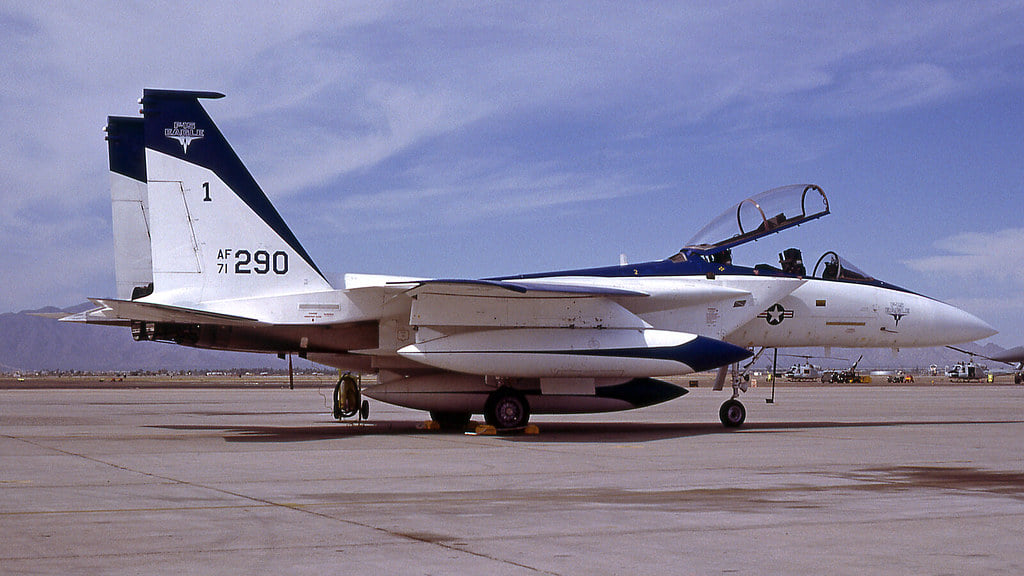
The aircraft became a dedicated McDD test aircraft from April 1984, and was used in various programs.
On 1 October 1984, McDD became involved in the ‘Agile Eagle’ program, which culminated in a STOL MTD (Short Take Off and Landing Maneuvering Technology Demonstrator) prototype. 71-0290 was fitted with canard wings, improved radar, LANTIRN and a strengthened landing gear. Following mods the aircraft was redesignated NF-15B, and first flew in this condition on 7 September 1988. At the end of the initial test program, thrust-vectoring nozzles were installed; the first flight with these was made from St Louis on 16 May 1989.
71-0290 moved to Edwards on 25 May. The program, and especially the thrust-vectoring part of it, was very successful end ended on 12 August 1991 In 1992, a program called ACTIVE (Advanced Control Technology for Integrated Vehicles)was started: this was a NASA program which involved an advanced thrust-vectoring nozzle, which could be used at supersonic speeds.
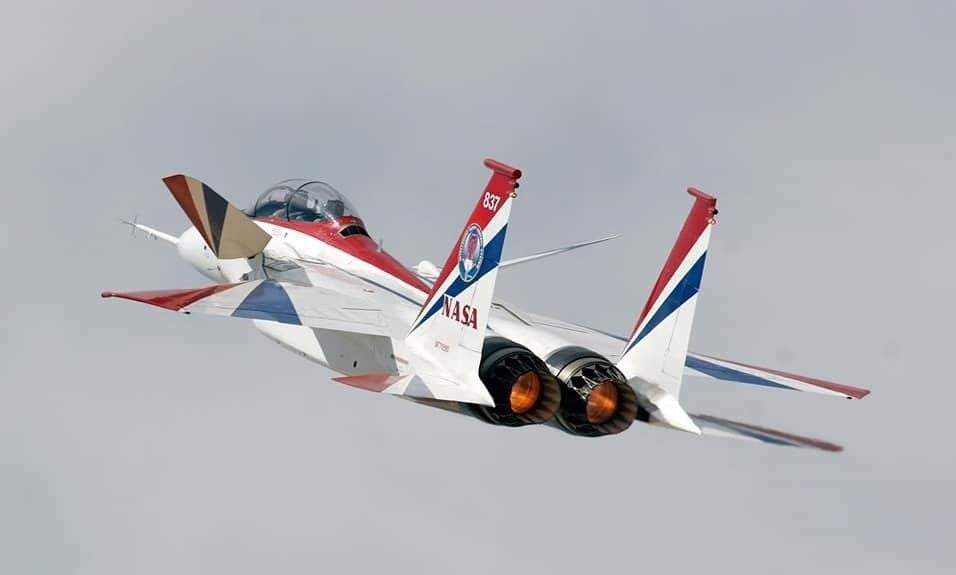
71-0290 was pulled out of retirement and transferred to NASA control on 15 June 1993. The first flight for ACTIVE with axisymmetric nozzles was made in February 1996, and on 31 October thrust vectoring was used at a speed of Mach 1.95. The next program for the aircraft to be involved in was that of the F-15 IFCS (Intelligent Flight Control System), which lasted from 1999 to 2008.
The IFCS allowed the aircraft to be safely controlled with various degrees of damage to the airframe; sensor input allowed the aircraft’s computer to react to changing flight parameters. Various progressive updates of the system were tested over the years. In December 2006, the aircraft started flying with the ‘Quiet Spike’, and was fitted with a giant pitot tube. This was a study into the effects of supersonic shock waves. The aircraft had received NASA marks as 837 by July 1996, and officially became N837NA on 23 July 2001. The aircraft’s last flight was made on 30 January 2009. However, the registration N837NA was not cancelled until 17 November 2011. The aircraft is still present at Edwards AFB as of now.
